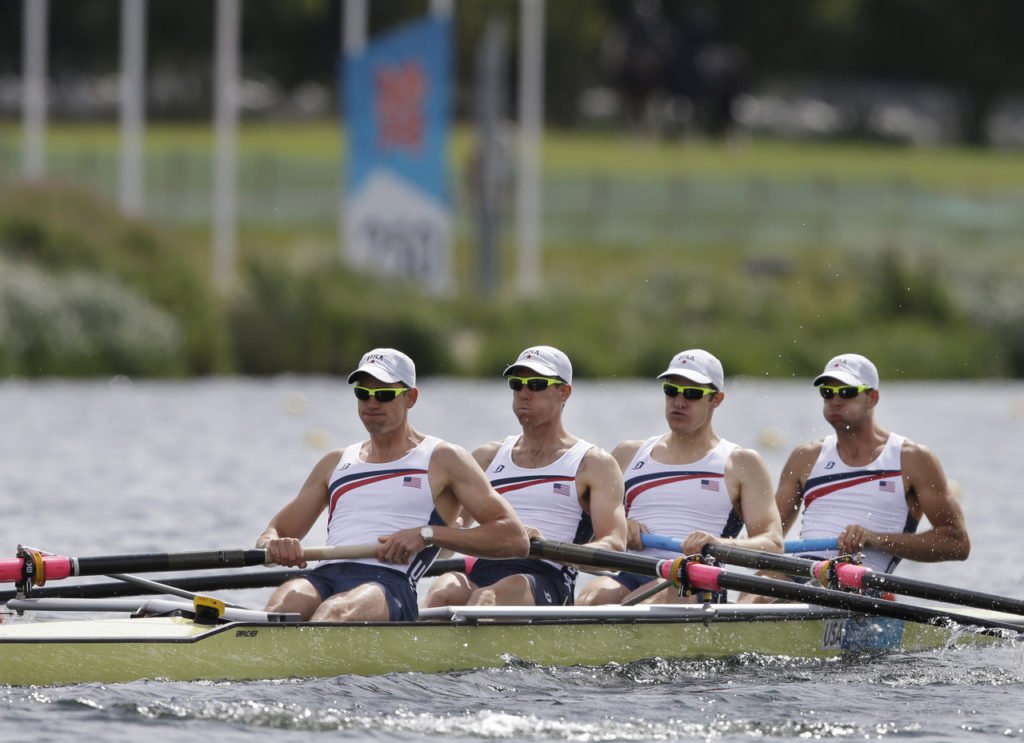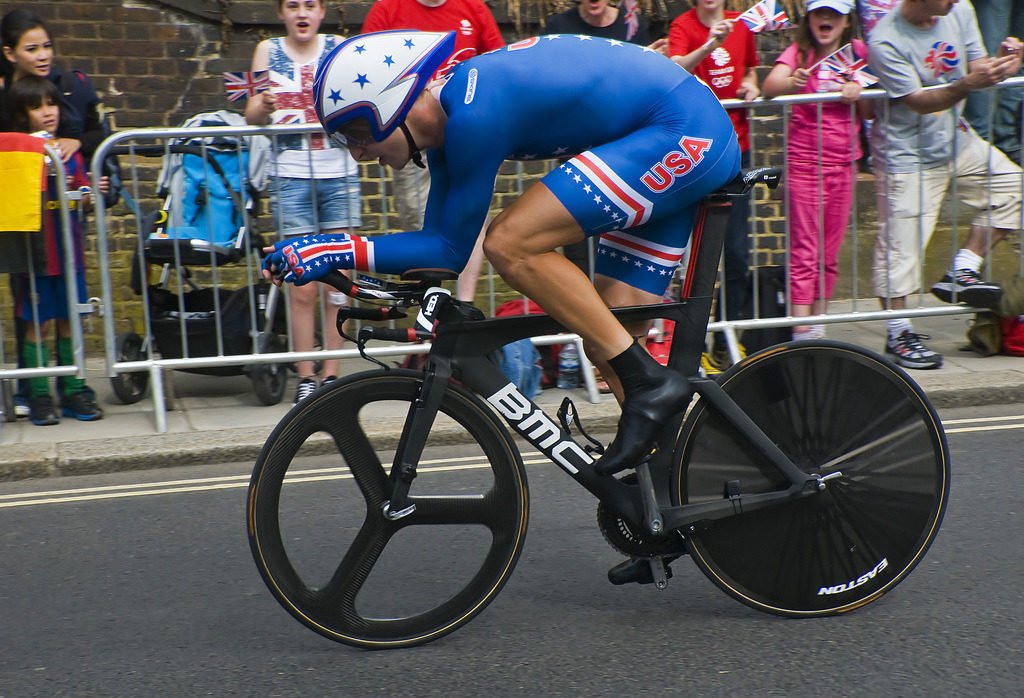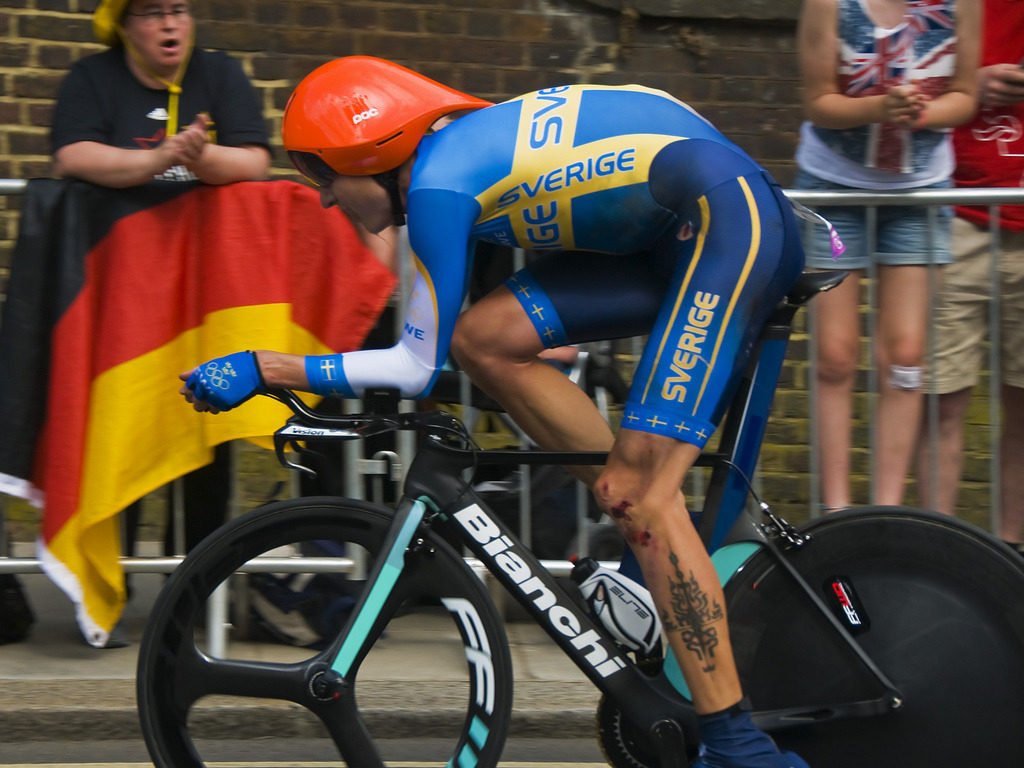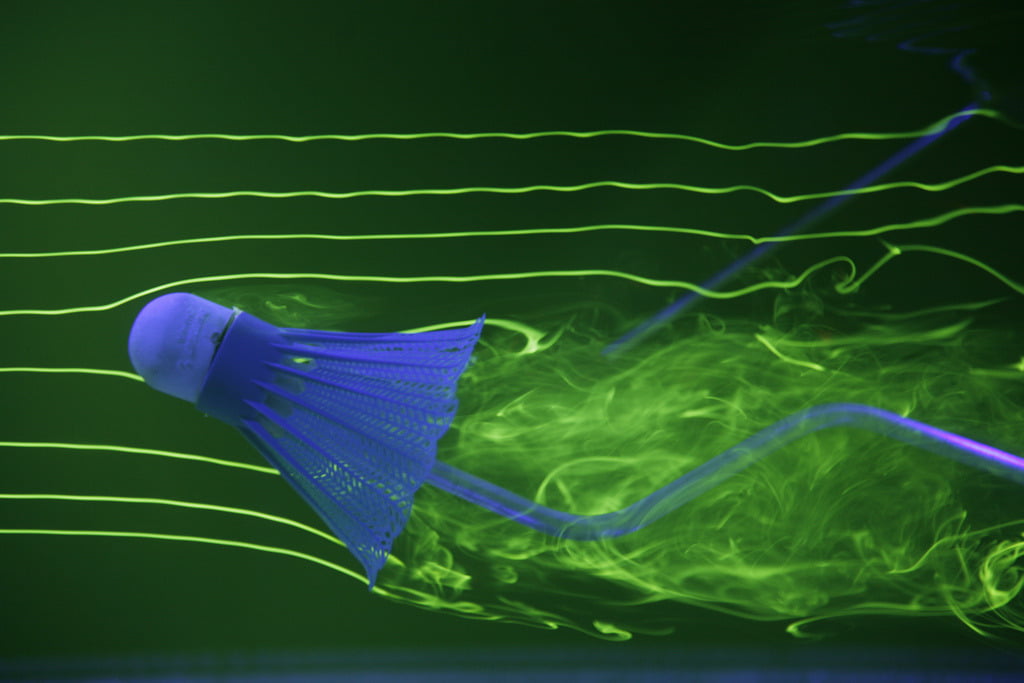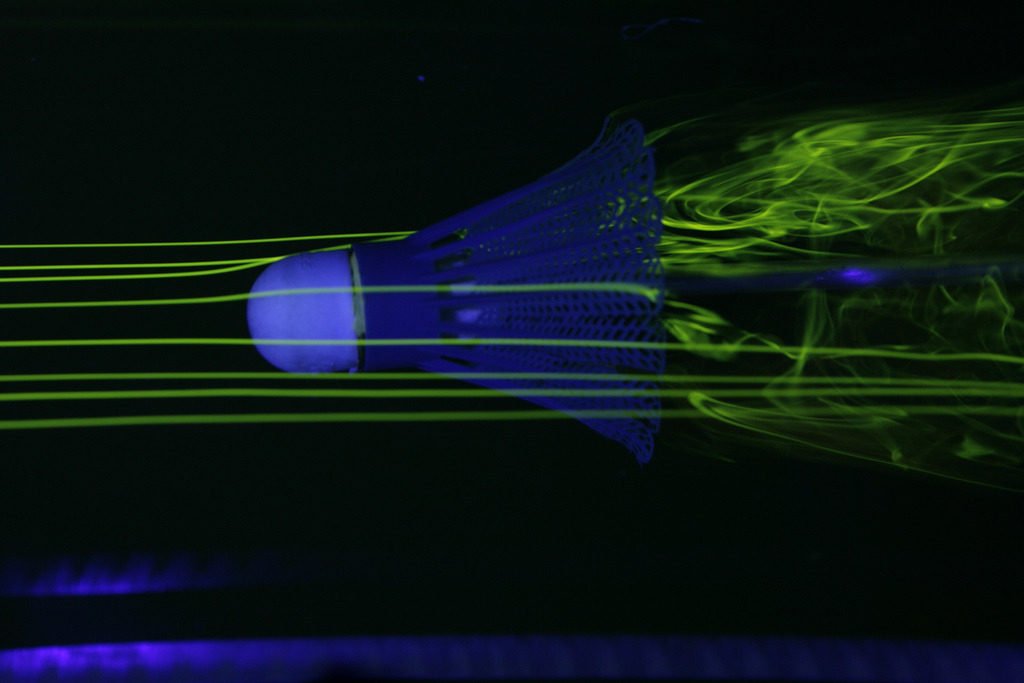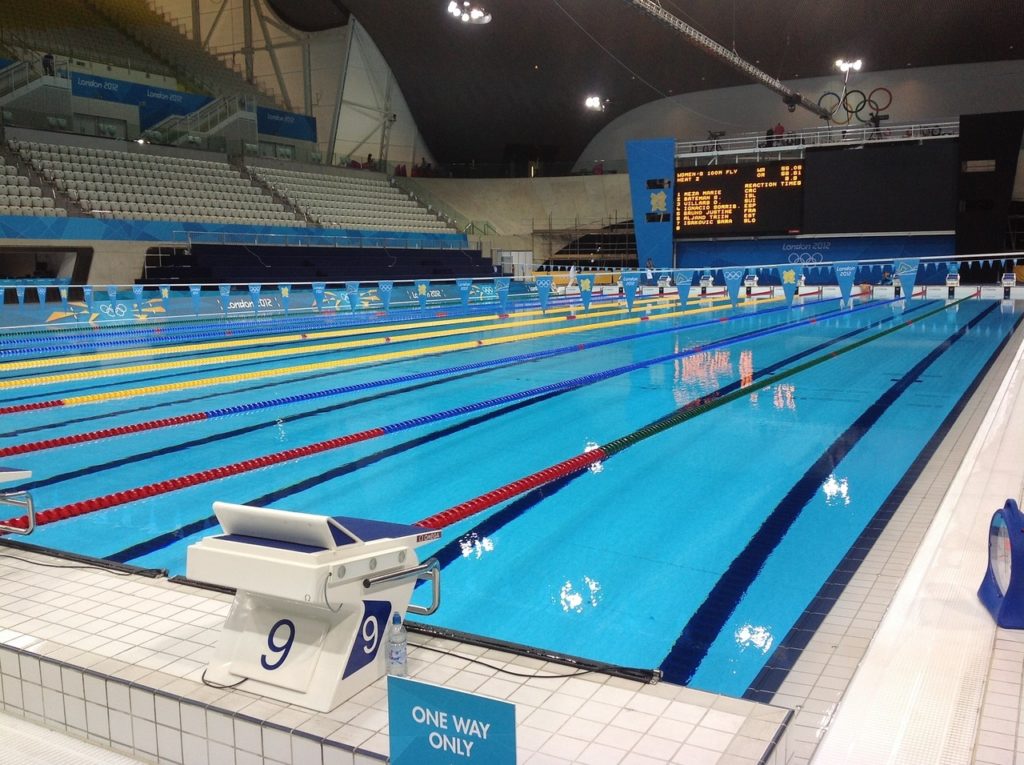In rowing, as in any water sport, drag comes in three varieties: skin friction, form (or pressure) drag, and wave drag. Skin friction comes from the friction between the hull and water causing the boat to drag water with it as it moves. This can be mitigated with the right materials and surface finish but will never be completely negligible. In fact, the racing shells used in rowing are unusual for boats because skin friction is their major source of resistance. This is because form drag, caused by the shape of the boat cutting through the water, and wave drag, the energy lost due to the waves that form along the hull, are small in racing shells due to their long, narrow, and streamlined shape. Because skin friction dominates among the three types of drag, the force a rower overcomes to move the boat is proportional to the hull’s velocity squared, and the power required to do so is proportional to the hull’s velocity cubed. This means that it is more efficient for rowers to keep a constant hull speed throughout a race than it is to start slow and speed up or start fast and slow down because the work (power x time) needed to keep a constant speed is smaller. For more on the physics of rowing, check out Anu Dudhia’s excellent website or this video from Physics of Life. (Photo credits: Ecouterre, AP)
FYFD is celebrating the Olympics by featuring the fluid dynamics of sport. Check out some of our previous posts, including what makes a pool fast, how divers reduce splash, and the aerodynamics of badminton.

